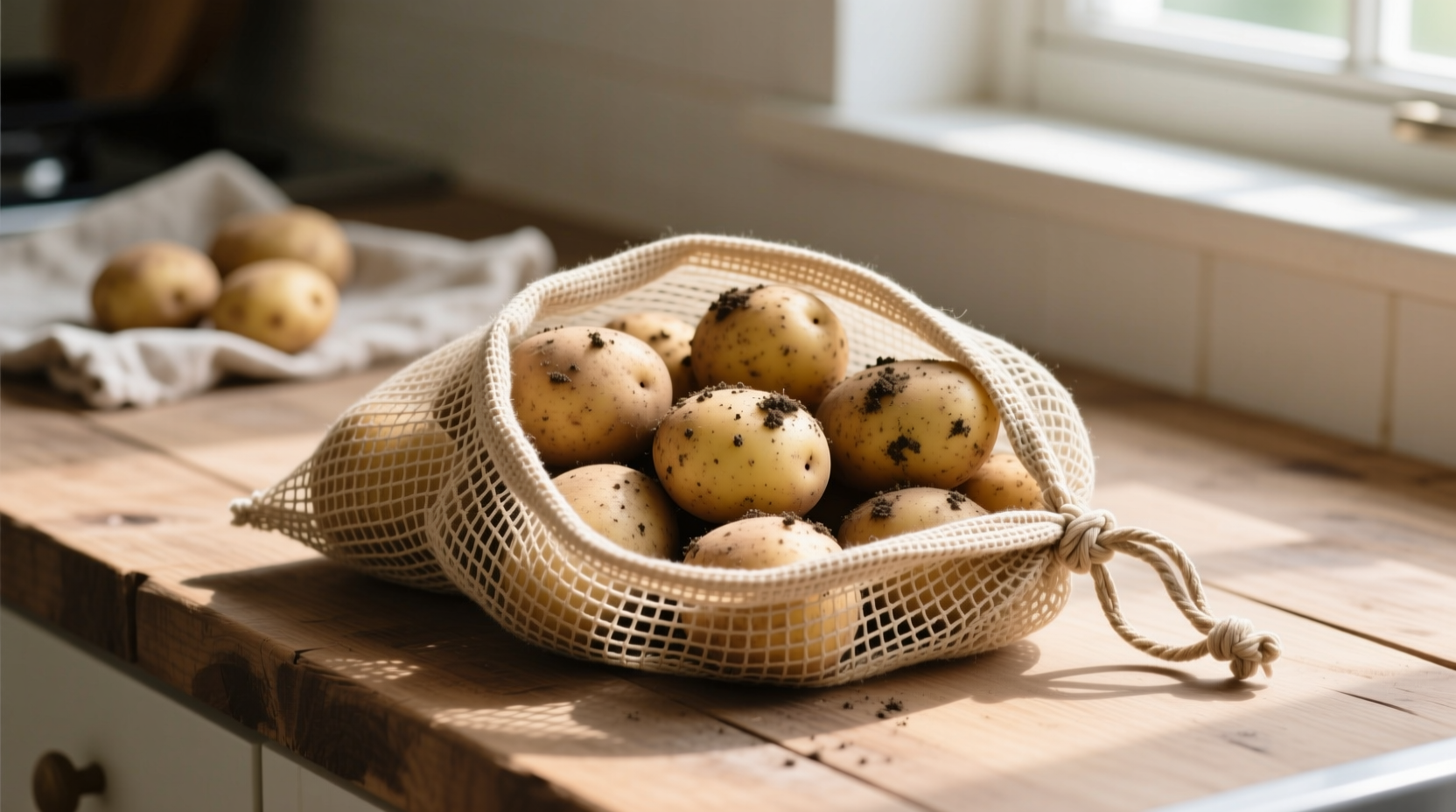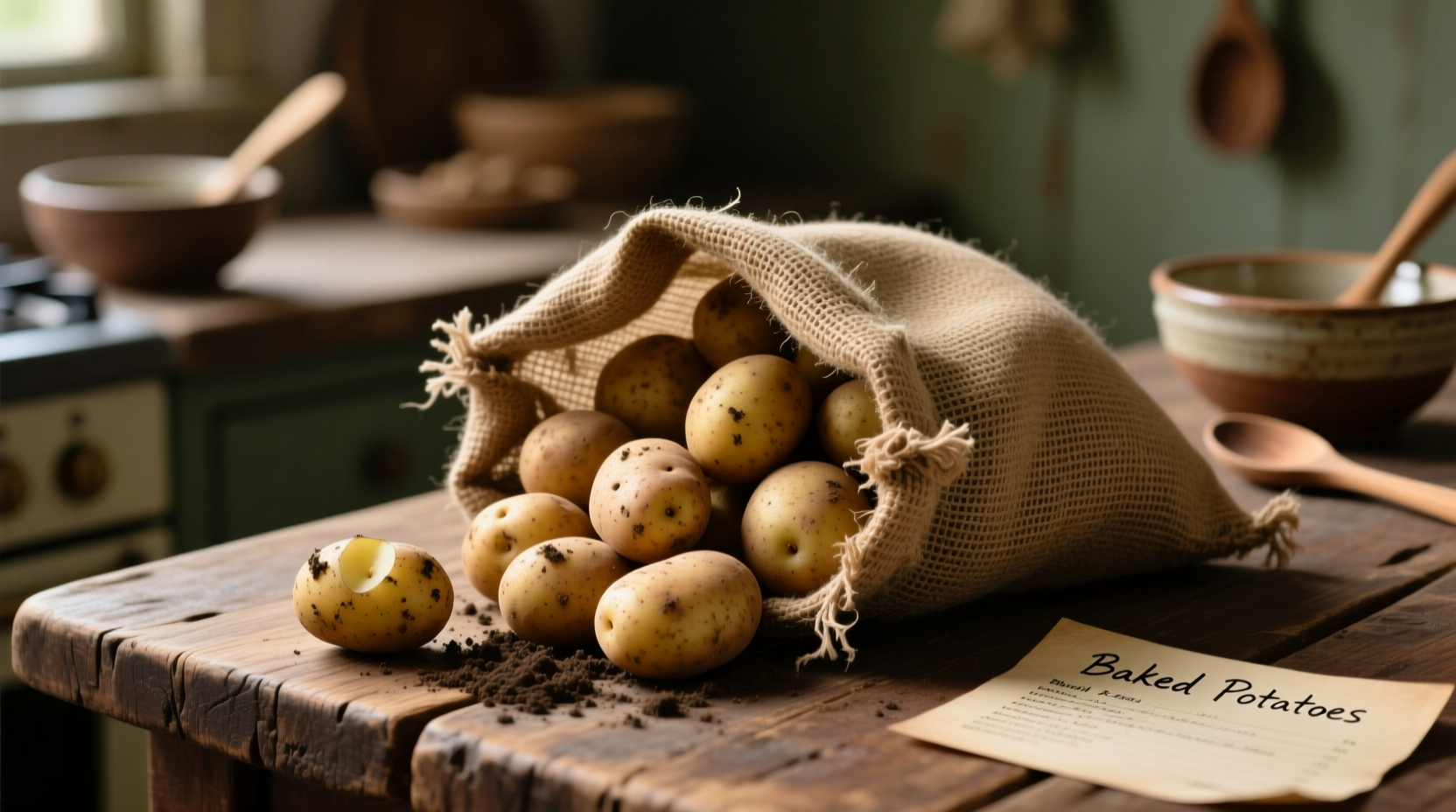Why Proper Potato Storage Matters
Did you know that improper storage causes nearly 30% of household potatoes to spoil before consumption? Potatoes aren't just another pantry item—they're living organisms that continue to respire after harvest. The right storage solution prevents premature sprouting, shriveling, and decay while maintaining nutritional value.

How Potatoes Breathe: The Science Behind Storage
Potatoes release moisture and carbon dioxide through their skin. When trapped in non-breathable containers, this creates a humid microclimate that encourages:
- Mold growth (particularly Penicillium species)
- Soft rot bacteria proliferation
- Accelerated sprouting due to ethylene gas buildup
According to USDA agricultural research, optimal potato storage requires 85-90% relative humidity with consistent air exchange—conditions impossible to achieve in sealed plastic bags.
Bag Material Comparison: What Works and What Doesn't
| Bag Type | Breathability | Moisture Control | Shelf Life Extension | Best For |
|---|---|---|---|---|
| Mesh bags | ★★★★★ | ★★★★☆ | 3-4 weeks | Regular household storage |
| Paper bags | ★★★★☆ | ★★★☆☆ | 2-3 weeks | Short-term storage, grocery transfers |
| Cotton drawstring | ★★★★☆ | ★★★☆☆ | 2-3 weeks | Reusable eco-friendly option |
| Plastic grocery bags | ★☆☆☆☆ | ☆☆☆☆☆ | 7-10 days | Avoid completely |
| Ventilated plastic bins | ★★★☆☆ | ★★★☆☆ | 2-3 weeks | Large quantities, root cellars |
Evolving Storage Recommendations: A Timeline
Potato storage science has evolved significantly over the past century. Understanding this progression helps explain why certain methods work better than others:
- 1920s-1950s: Potatoes stored in wooden crates in root cellars (temperature 45-50°F, high humidity)
- 1960s-1980s: Introduction of polyethylene bags—initially improved shelf life but later found to accelerate spoilage
- 1990s: USDA research confirms mesh bags outperform plastic for home storage
- 2010s: Food safety guidelines explicitly warn against sealed plastic containers
- 2020s: Focus on sustainable storage solutions with reusable natural fiber bags
Practical Storage Protocol: Step-by-Step
Preparing Your Potatoes
Before placing potatoes in their storage bag:
- Gently brush off excess dirt (never wash)
- Discard any bruised or damaged specimens
- Allow to air-dry in a shaded area for 2 hours
- Remove from original grocery packaging
Optimal Bag Setup
For best results with mesh or paper bags:
- Leave the top partially open for air circulation
- Store in a single layer when possible
- Place in a cool, dark location (45-50°F ideal)
- Check weekly for any developing issues
Common Storage Mistakes and Their Consequences
Based on consumer reports from food safety organizations, these errors significantly reduce potato shelf life:
- Storing with onions: Onions release gases that accelerate potato sprouting
- Refrigeration: Cold temperatures convert starch to sugar, altering flavor and texture
- Direct light exposure: Causes greening and solanine production (a natural toxin)
- Overcrowding: Prevents proper air circulation between tubers
When Standard Storage Methods Fail: Context Boundaries
Certain situations require modified storage approaches:
- High humidity climates: Add a folded paper towel to absorb excess moisture
- Warm environments: Prioritize mesh bags over paper which can become damp
- Long-term storage (beyond 4 weeks): Transfer to ventilated wooden crates with straw layers
- After cutting: Store in airtight container with cold water to prevent oxidation
Extending Freshness: Pro Tips from Food Preservation Experts
University agricultural extensions recommend these evidence-based techniques:
- Store an apple with your potatoes—the ethylene gas from apples inhibits sprouting
- Rotate bag contents weekly to prevent pressure points
- Keep potatoes away from heat sources (even 5°F difference matters)
- For sweet potatoes, use slightly warmer storage (55-60°F)











 浙公网安备
33010002000092号
浙公网安备
33010002000092号 浙B2-20120091-4
浙B2-20120091-4